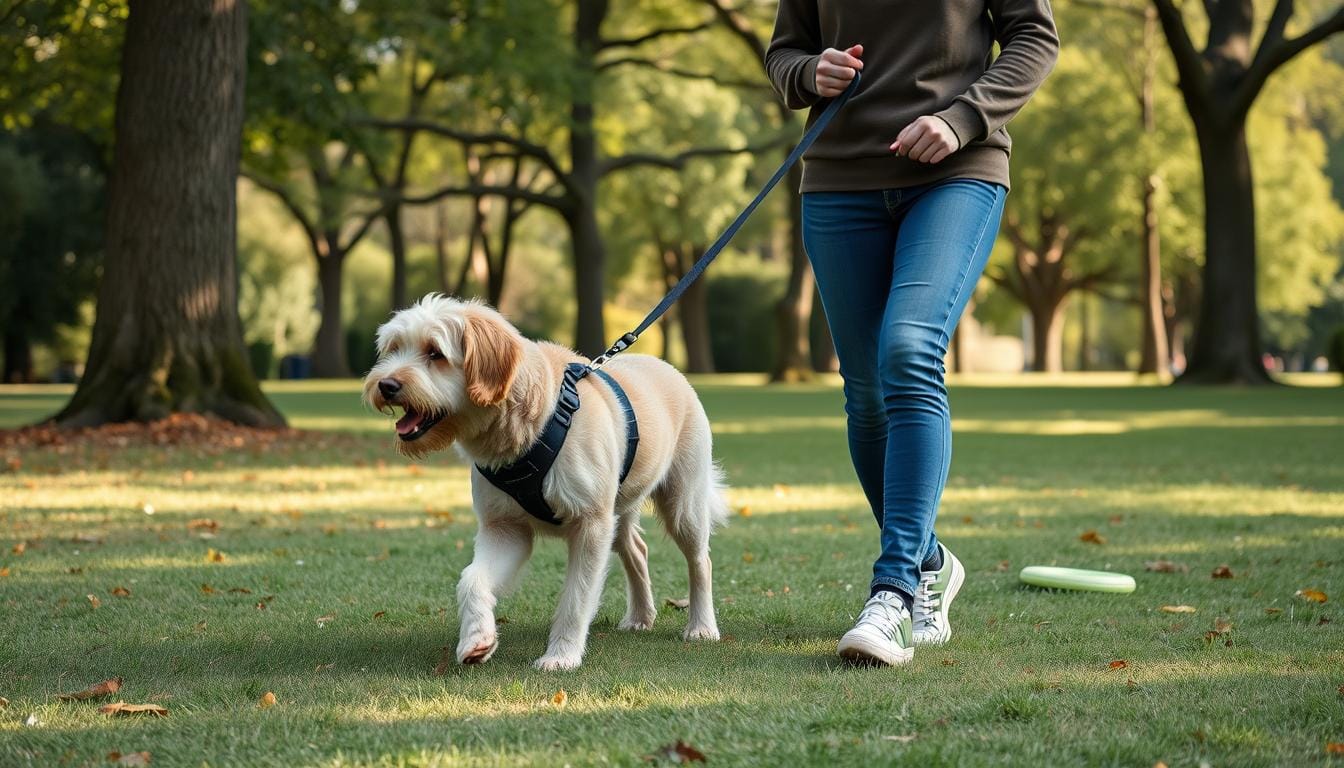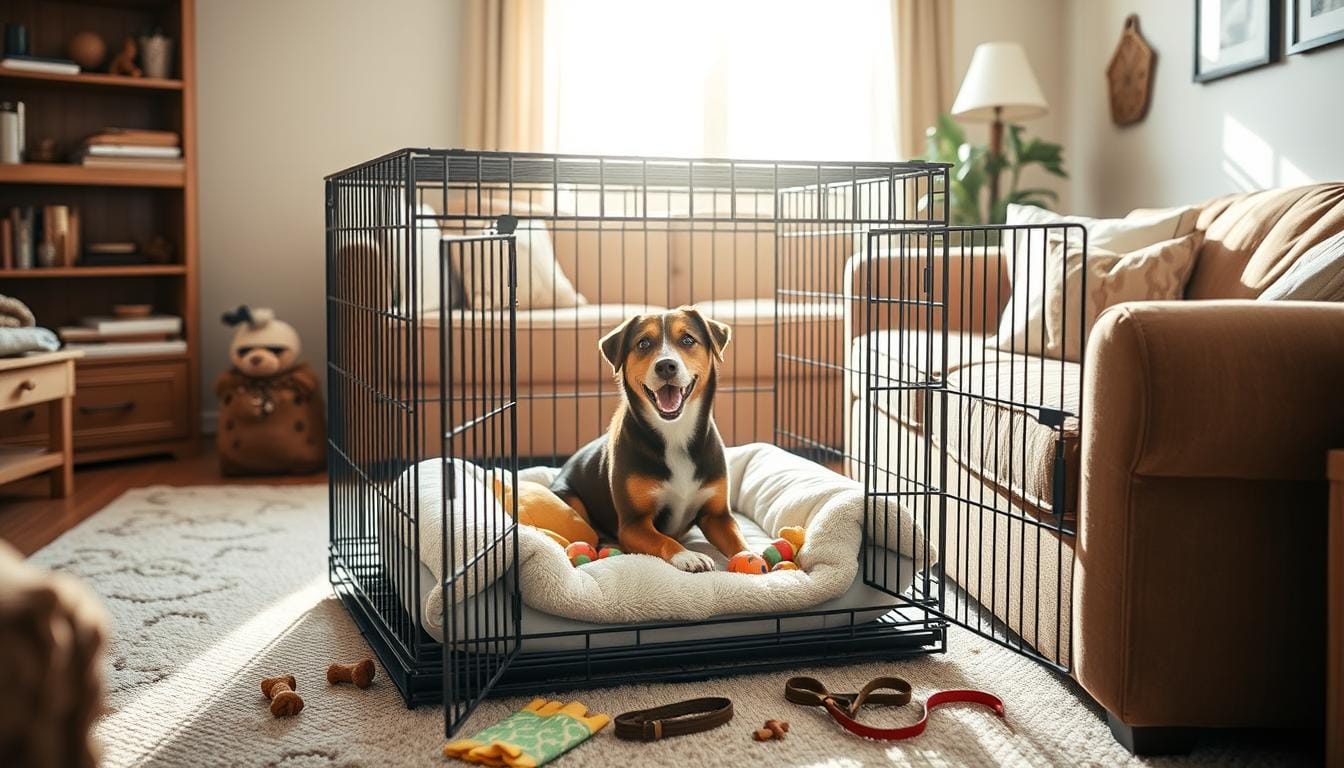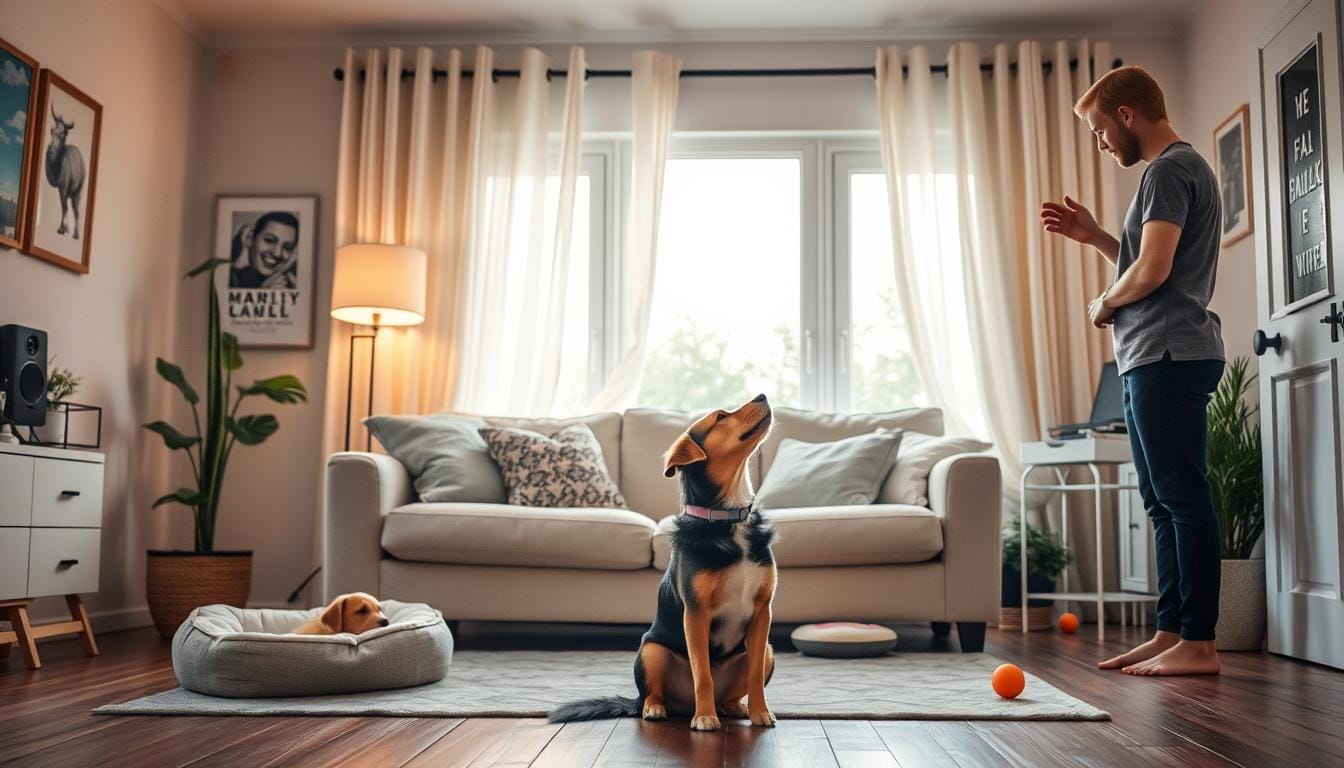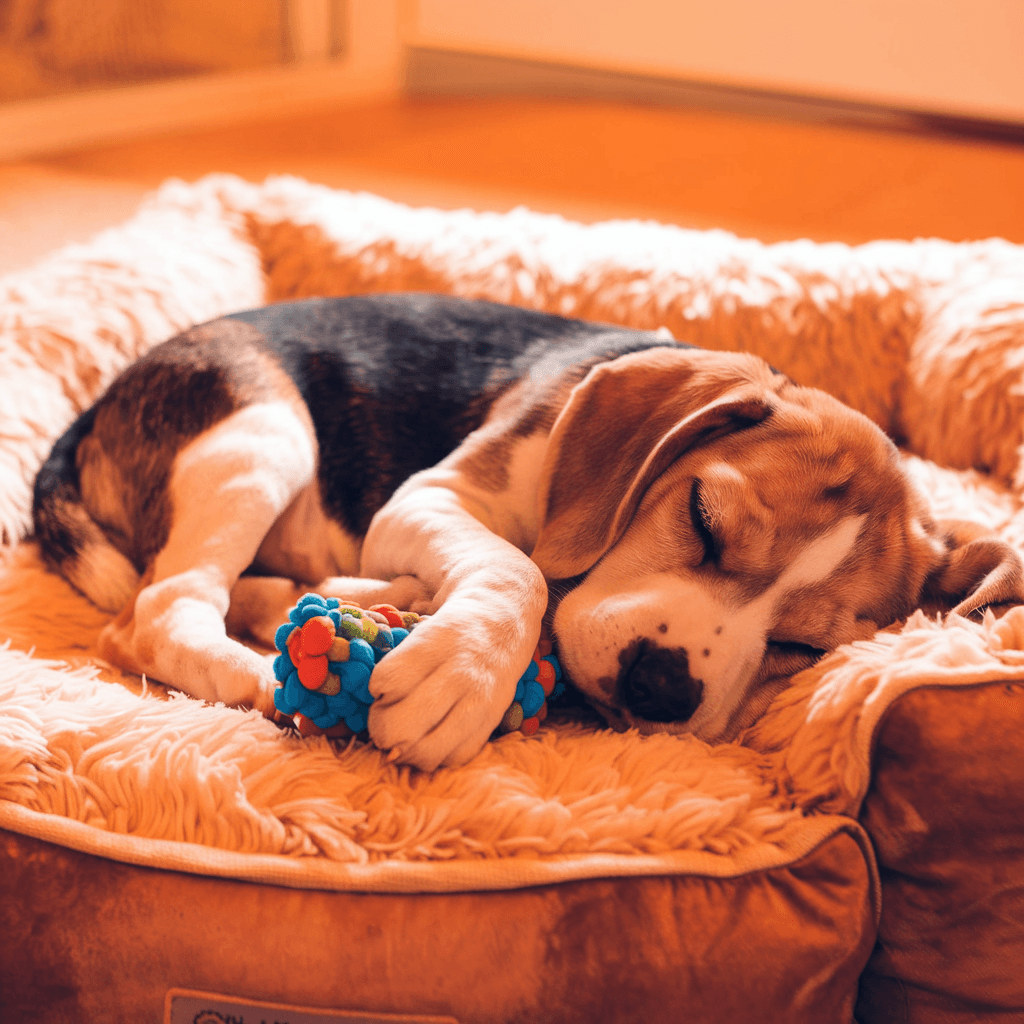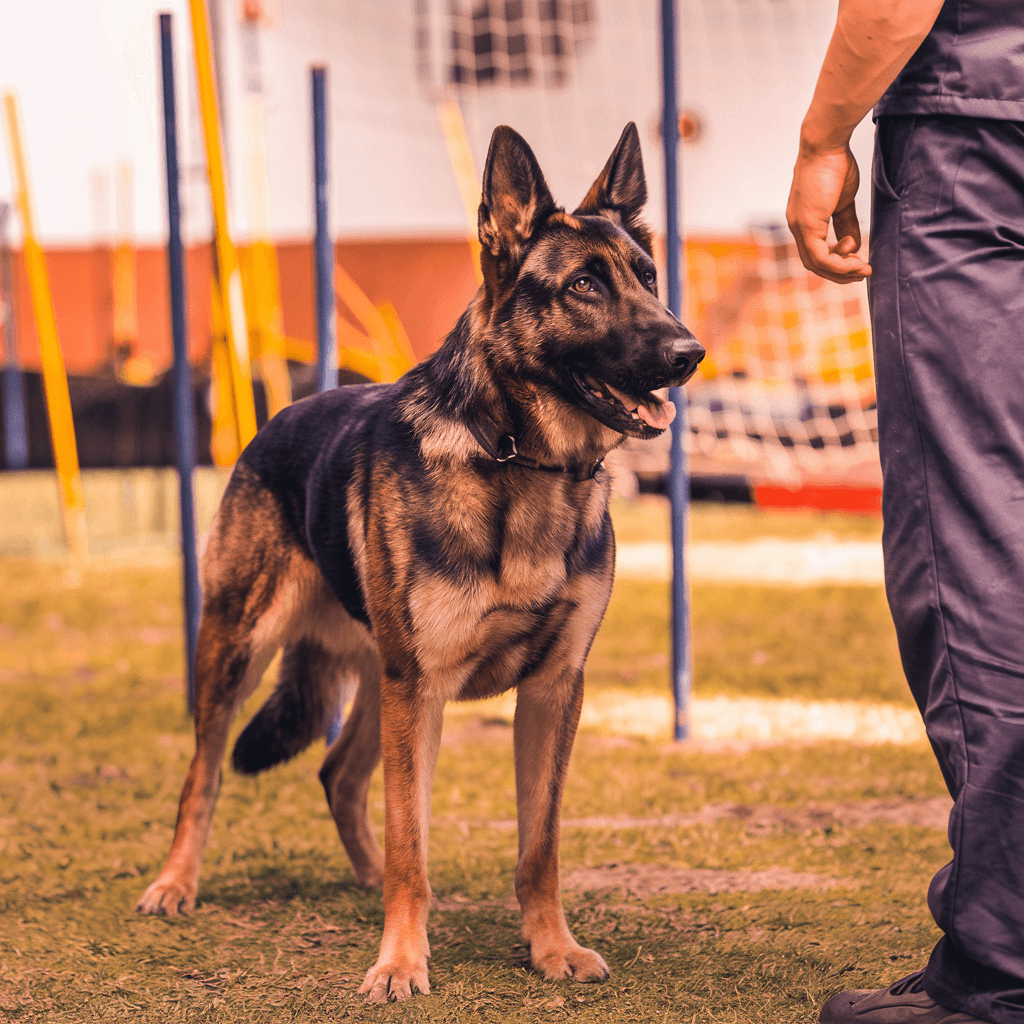Dogs can sense human emotions instinctively. They can read our facial expressions and body language. They even sense changes in our voice tone.
This emotional intelligence lets them communicate with us. They use cues like tail wags and ear positions. As we explore the bond between humans and dogs, let’s focus on safe dog nail trimming.
Keeping your dog’s nails trimmed is key to dog grooming. Yet, many pet owners find it hard. About 45% of dog owners struggle with nail trimming at home.
Don’t worry – we’re here to help. We’ll guide you through the process. This way, you and your pup will have a positive experience.
Regular nail care is vital for your dog’s comfort and health. Overgrown nails can cause pain and mobility issues. They can even lead to infections.
By learning safe dog nail trimming techniques, you’ll help your pet’s well-being. You’ll also save time and money on professional grooming.
In this guide, we’ll cover everything from choosing the right tools to dealing with anxious dogs. We’ll also share tips on maintaining nail health between trims and when to seek professional help. So, let’s start this journey to become expert dog groomers!
Key Takeaways
- Regular nail trimming is essential for your dog’s health and comfort
- About 45% of dog owners find nail trimming challenging
- Proper tools and techniques are crucial for safe dog nail trimming
- Positive reinforcement can help anxious dogs tolerate nail trims
- Consistent nail care prevents various paw-related health issues
- Professional help is available when needed for dog nail trimming
Understanding the Importance of Regular Nail Trimming
Many pet owners forget how important nail trimming is for their dogs. It’s not just about looks; it’s vital for their health and happiness. Let’s look at why keeping your dog’s nails trimmed is so crucial.
Health Benefits of Well-Maintained Nails
Dogs with trimmed nails have many health benefits. They can move around easily, improving their life quality. Trimming nails helps keep their paws healthy, preventing joint problems and keeping them mobile.
It also stops paw injuries and painful nail issues like splitting or breaking.
Consequences of Overgrown Nails
Ignoring your dog’s nails can cause big problems. Overgrown nails make walking hard and hurt, leading to mood changes. Dogs might get upset, aggressive, or not want to play.
Long nails can also cause paw pain, make walking hard, and lead to joint problems.
Ideal Nail Length for Dogs
The right nail length is when they don’t touch the ground. Most dogs need trimming every 4 to 6 weeks. But, this can change based on their lifestyle and breed.
Dogs that go outside a lot might wear down their nails naturally. Indoor pets need more grooming.
| Nail Color | Trimming Difficulty | Precautions |
|---|---|---|
| White/Light | Easier | Quick is visible |
| Black/Dark | More challenging | Extra caution needed |
Regular nail care is essential to avoid long-term health problems. If you’re not sure how to trim your dog’s nails, get help from a professional groomer.
Essential Tools for Dog Nail Trimming
Safe dog nail trimming starts with the right tools. We’ll show you the essentials for a smooth and stress-free grooming experience.
Types of Nail Clippers and Grinders
There are several options for trimming your dog’s nails:
- Scissor-style clippers
- Guillotine clippers
- Nail grinders
Experts often say grinders are the safest for effective nail trimming. They help avoid cutting nails too short and offer more precision.

Choosing the Right Tool
Choose your tool based on your dog’s size and nail type. Larger dogs with thicker nails might need plier-style clippers. Smaller breeds might do well with guillotine clippers.
Additional Supplies
For a complete nail trimming kit, include:
- Styptic powder to stop bleeding
- Treats for positive reinforcement
- Nail file for smoothing rough edges
Remember, regular nail maintenance is key. Trim your dog’s nails every 4-8 weeks, depending on their growth rate. With the right tools and tips, you’ll get the hang of safe dog nail trimming in no time.
Preparing Your Dog for Nail Trimming
Getting your furry friend ready for dog nail trimming can be tough. We’ve got some dog grooming tips to help. They’ll make the process easier for you and your pup.
Start early with puppies by handling their paws often. This builds trust and makes them familiar. For older dogs, be patient. It may take up to 20% longer to get them used to it.
Introduce nail trimming tools slowly. Let your dog sniff and explore the clippers or grinder without trimming. Use treats to make it a positive experience.
- Touch your dog’s paws with the tool
- Offer high-value treats
- Practice short sessions daily
For anxious pups, try using a silicone mat with peanut butter. It can help distract them and reduce stress during trimming.
“Consistency and positive reinforcement are crucial in preparing your dog for nail trims.”
About 30% of dogs are scared or anxious about nail trimming. If your dog is really resistant, think about getting professional help. Or talk to your vet about anxiety medication.
| Preparation Method | Success Rate |
|---|---|
| Early paw handling | 85% |
| Gradual tool introduction | 75% |
| Desensitization training | 40% improvement |
With these dog grooming tips, you’ll be ready for successful nail trimming at home.
Step-by-Step Guide to Trimming Your Dog’s Nails
Trimming your dog’s nails can seem scary, but it’s doable. We’ll guide you through it to help you get better at this important grooming task.
Identifying the Quick
The quick is the blood part in your dog’s nail. It’s easy to see in light nails as a pink area. But, it’s harder in dark nails.
Start by cutting a little bit at a time. Look for a chalky white ring with a black dot in the center. This means you’re close to the quick.
Proper Positioning and Technique
Hold your dog’s paw firmly but gently. Cut at a 45-degree angle, parallel to the ground. This way, you avoid splitting and ensure safe trimming.
If your dog gets anxious, try sitting behind or to their side. This can help them feel more at ease.
Trimming Dark vs. Light Nails
Trimming light nails is easier since you can see the quick. But, dark nails need more care. Cut small amounts at a time to avoid hitting the quick.
After clipping, use a nail grinder for smoother edges. This makes the nails look nicer and feel better for your dog.
- Trim once a month for most dogs
- Dogs who run on pavement may need less frequent trimming
- Indoor dogs or those on grass may need bi-weekly trims
Remember, being patient is crucial in mastering these grooming tips. Regular trims help prevent long-term problems like arthritis and joint issues. With practice, you’ll get better at trimming your dog’s nails safely, keeping them comfortable and healthy.
Dog Nail Trimming Near Me: When to Seek Professional Help
Trimming your dog’s nails can be tough. If you’re not sure how to do it, it’s time to look for professional help. Pet Evolution offers top-notch grooming services, including nail care, all over the United States.
Professional groomers know how to handle dogs that are nervous or hard to manage. They use special tools and methods to make sure it’s safe and stress-free. If your dog has thick, dark nails or bleeds easily, getting regular trims from a pro is a good idea.
Pet Evolution’s Mobile Nail Trim service comes right to your home. Their team visits to trim nails for dogs and cats. This is great for pets that feel more at ease at home.
| Service | Description | Price Range |
|---|---|---|
| Glam Squad Groom | Full-service grooming including nail trim | Starting at $100 |
| Mobile Nail Trim | At-home nail trimming service | Contact for quote |
| Medicated Bath | Special bath for skin conditions | $15-$25 |
| Geriatric/Special Needs Grooming | Tailored care for senior or special needs pets | Contact for quote |
If your dog’s nails are too long or are growing into their paw pads, see a vet right away. Getting professional help ensures your pet’s comfort and keeps them healthy. With these tips, you’ll know when to ask for expert help for your dog’s nail care.
Dealing with Anxious or Uncooperative Dogs
Trimming your dog’s nails can be tough if they’re anxious or hard to handle. We’ve got some tips to make it easier for you and your pet.
Positive Reinforcement Techniques
Using treats and praise can really help. Give your dog their favorite snacks and lots of love. This makes them look forward to nail trimming.
Gradual Desensitization Methods
Begin by lightly touching their paws without cutting. Then, introduce the sound of clippers or grinders slowly. This helps them get used to the tools and process.

Alternative Trimming Positions
Try different positions to see what works best. Some dogs like lying down or being distracted with treats. Find what makes them most comfortable.
| Technique | Description | Effectiveness |
|---|---|---|
| Positive Reinforcement | Use treats and praise | High |
| Desensitization | Gradual exposure to tools | Medium to High |
| Alternative Positions | Try different trimming positions | Varies by dog |
Never force or punish your dog during nail trimming. If they’re still anxious, talk to a vet about anti-anxiety options. With patience and the right steps, nail trimming can be stress-free for everyone.
Common Mistakes to Avoid When Trimming Dog Nails
Trimming dog nails safely can be tough, with 65% of owners facing challenges. We’ll look at common mistakes to help you get it right.
One big mistake is cutting nails too short. About 40% of owners accidentally hit the quick, causing pain and bleeding. To prevent this, trim a little at a time and use a nail grinder for accuracy.
Another error is rushing the process. Dogs can feel your stress, making it stressful for them too. Take your time and stay calm. If your dog seems stressed, trim just a few nails at a time.
| Mistake | Percentage of Owners | Solution |
|---|---|---|
| Cutting nails too short | 40% | Use a grinder or clip small amounts |
| Using dull clippers | 30% | Replace or sharpen tools regularly |
| Ignoring dewclaws | 25% | Include dewclaws in regular trims |
| Trimming after bathing | 20% | Trim nails when dry |
Remember to reward your dog during and after trimming. Studies show positive reinforcement boosts cooperation by 80%. Also, avoid trimming nails right after bathing, as they’re softer and more likely to split.
Maintaining Nail Health Between Trims
Keeping your dog’s nails healthy between trims is crucial for their overall well-being. We’ll explore some effective dog grooming tips to maintain optimal nail health and reduce the frequency of dog nail trimming sessions.
Natural Nail Wear Through Exercise
Regular exercise on hard surfaces like concrete can naturally wear down your dog’s nails. Taking your pup for walks or runs on sidewalks or paved paths can help keep their nails at a manageable length. This natural wear can extend the time between nail trims and promote healthy paw posture.
Regular Paw Checks
Performing weekly paw checks is essential for monitoring nail length and condition. Look for signs of wear, cracks, or ingrown nails. Early detection of issues can prevent more serious problems down the line. Regular paw checks also help you stay on top of your dog’s grooming needs.
Nail Care Products and Supplements
Incorporating nail care products into your dog grooming routine can be beneficial. Nail files can smooth rough edges between trims, preventing snags and splits. Consider nail care supplements to promote strong, healthy nails. These supplements often contain biotin, which supports nail growth and strength.
For dogs with fast-growing nails, implement more frequent, lighter trims rather than infrequent, extensive trimmings. This approach can help your dog get accustomed to the nail trimming process and reduce anxiety associated with grooming.
“Regular nail trimming can prevent painful splaying and splitting of your dog’s nails, ensuring their comfort and mobility.”
| Nail Care Practice | Frequency | Benefits |
|---|---|---|
| Exercise on hard surfaces | Daily | Natural nail wear, improved circulation |
| Paw checks | Weekly | Early detection of issues, monitoring growth |
| Nail filing | Bi-weekly | Smooths rough edges, prevents snags |
| Supplements | Daily | Promotes nail strength and health |
By incorporating these practices into your dog care routine, you can maintain your pet’s nail health and reduce the need for frequent professional grooming services. Remember, consistent care is key to keeping your furry friend comfortable and healthy.
Conclusion
We’ve talked about the key parts of safe dog nail trimming, which is vital for dog grooming. Keeping their nails trimmed helps avoid pain and discomfort for our pets. It also helps them move better.
Don’t worry, trimming your dog’s nails can be easy. You just need the right tools, some practice, and patience. If you’re not sure, many pros can help. Services like Furry Land Mobile Dog Grooming make it easy and stress-free for everyone.
Looking for a cheaper option? Many places offer low-cost or even free nail trimming. Shelters, vet schools, and community groups often have these services. Making nail care a regular part of your routine keeps your dog happy and healthy.







